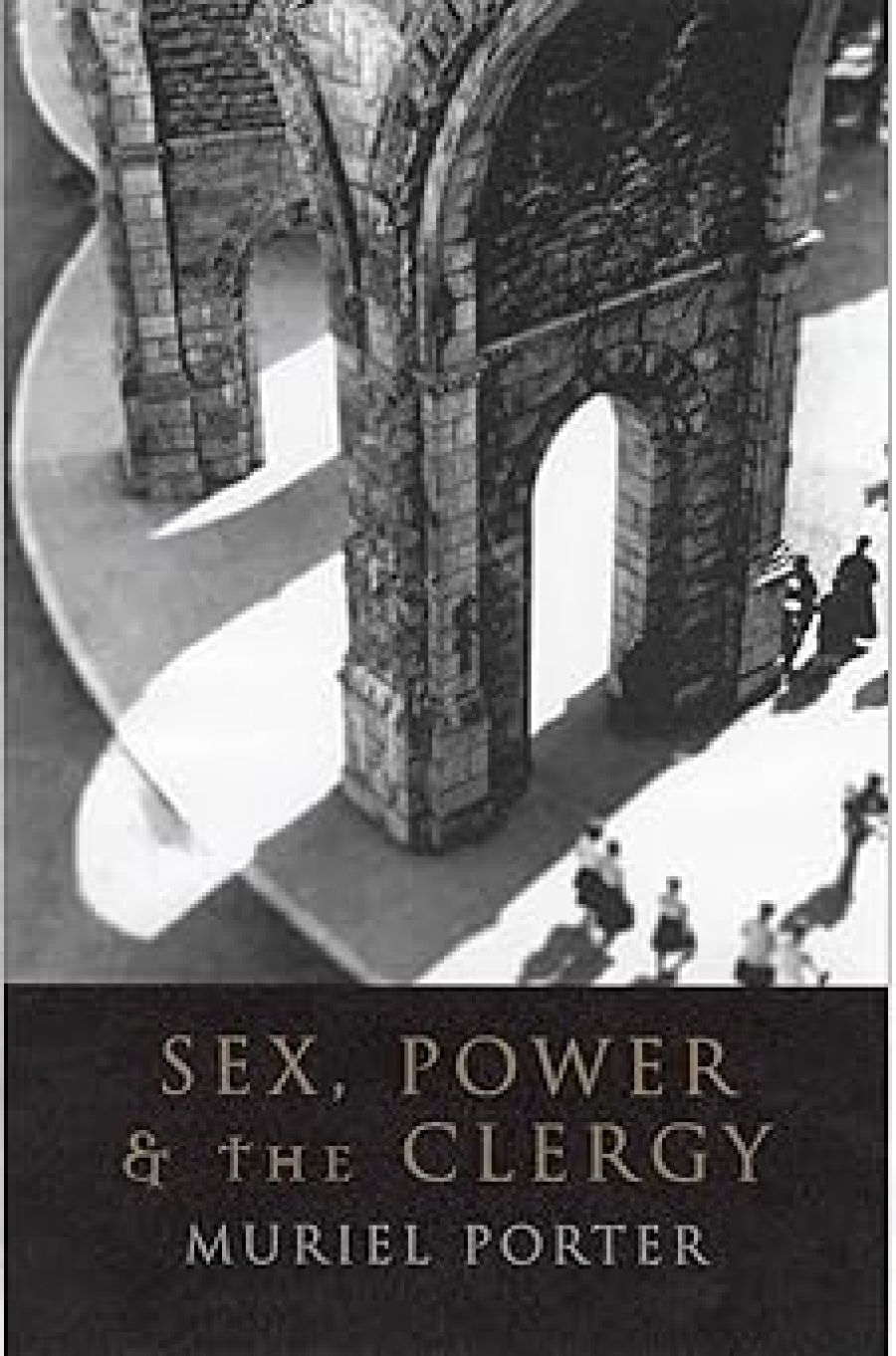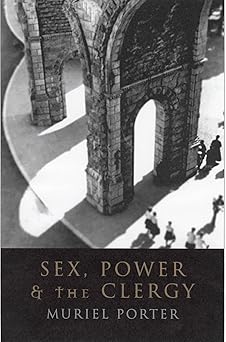
- Free Article: No
- Contents Category: Cultural Studies
- Review Article: Yes
- Article Title: A Wake-up Call
- Online Only: No
- Custom Highlight Text:
This insider’s account of the sexual abuse crisis facing the Christian churches is an engaging read – not only for believers, but for us heathens as well. The author wears various hats. A journalist and regular commentator on religious issues for many years, Muriel Porter now lectures in journalism at RMIT. She describes herself as a ‘committed Anglican laywoman’ who has been involved in high-level structural decision-making within the Anglican Church for the past fifteen years. These multiple roles add much to her discussion, but can also produce some tensions.
- Book 1 Title: Sex, Power and The Clergy
- Book 1 Biblio: Hardie Grant, $29.95 pb, 216 pp
- Book 1 Cover Small (400 x 600):

- Book 1 Cover (800 x 1200):

Porter’s aims can be paraphrased as follows: to place on record the major sexual abuse cases within the Christian churches in Australia in recent years; to contextualise sexual abuse of women and children within the cultures of governance of those churches; and to explore the long-term implications of the crisis. Her insider status makes her discussions of the latter two issues particularly rewarding, although at times she seems torn between presenting a dispassionate overview and arguing a case for reform. The grounding of her analysis in her theological beliefs can also be both an asset and a weakness, particularly for secular readers who may struggle to make their own assessments of some of the debates.
Topically, as it turns out, Porter begins with the controversy surrounding Peter Hollingworth, before turning to the 2002 allegations against George Pell. The book was published in April, just before the report on the Brisbane diocese that rekindled calls for Hollingworth’s resignation or removal. While, on one level, this timing is a publicist’s dream, it also means that most of the first chapter is already out of date.
While her focus is on the Anglican and Catholic churches in Australia, Porter also looks at the recent ‘crisis’ in the Catholic Church in the US, and at subsequent international developments. Her account reveals something of a domino effect, with church leaders around the world falling ‘like ninepins’ following the exposure of widespread and high-level cover-up of sexual abuse within the US Catholic Church. Even though there is no evidence of such comprehensive cover-ups in Australia, Porter argues that secrecy and denial are common features in the responses of individual clergy.
In her chapter on the media, Porter rejects claims of a witch-hunt, particularly against Catholic priests. She concludes that the secular media in Australia has, by and large, performed a useful ‘public watchdog and whistleblower’ role. This is one instance of Porter’s background weakening rather than strengthening her argument, as her conclusion reads like a thinly veiled defence of her profession. She makes the salient point, though, that lack of understanding by secular journalists of the workings of Christian churches can protect church leaders from full scrutiny.
Of most interest are those sections of the book where Porter more overtly argues her case, particularly about the churches’ deeply patriarchal and hierarchical power structures. She argues that their inability to reconcile their longstanding fear of women, sex and the body with the contemporary practices of their adherents has resulted in a ‘deep and unhealed wound’. This failure contributes to the problem of sexual abuse, and prevents an open and adequate response by those in the church hierarchy.
Porter is particularly strong on the relationship between institutional power structures and sexual abuse. As she points out, there are few accountability mechanisms for clergy. The blurring of public and private boundaries in many priest–parishioner relationships creates an atmosphere for abuse. And the moral and spiritual standing of the clergy, combined with the traditional view of women’s sexuality as a threat, make it particularly difficult for victims to speak up. Many blame themselves, or rationalise the abuse as God’s will.
Celibacy within the Catholic priesthood is, as Porter points out, an easy target. She does not blame celibacy per se for the high rates of sexual abuse by Catholic priests, pointing out that most sexual abuse, whether inside or outside the church, is carried out by non-celibate men. This, she argues, reflects the fact that sexual abuse is predominantly about power, not about the availability of alternative sexual outlets. The problem she sees with celibacy is that it sets up a spiritual élite, entrenches power relationships between priests and their parishioners, and discourages victims from speaking up. She also suggests that the priesthood is attractive to men with sexual difficulties or who are emotionally or psychologically dysfunctional, thereby increasing the likelihood of abuse.
One observation: Porter asserts throughout that ‘sexual abuse is not about sex, but power’. Fair enough, but the sexual nature of sexual abuse should not be overlooked, particularly in the light of her account of the traditional hostility of the Christian churches to any form of sexual expression other than procreation. Her insistence on this either/or definition of sexual abuse seems to curtail a full exploration of the implications of her argument.
The tension between her roles of dispassionate journalist and passionate advocate is highlighted by Porter’s use of sources. At times they seem thin; at others, there is a sense that they are being marshalled for the purpose of the argument. Porter’s almost total reliance on secondary sources detracts from the force of her argument. This is particularly noticeable in her figures on the numbers of victims of abuse – figures drawn solely from the newsletter of Broken Rites, an advocacy and support group for victims. A less interested analyst would, I think, show more caution in relying exclusively on such sources. Nevertheless, Porter offers a clear and concise overview and a passionate analysis of what she calls the ‘last wake-up call’ to the major Christian churches in the West. She deserves a wide audience.


Comments powered by CComment